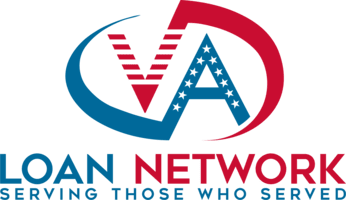In this Article
What Is the VA Funding Fee?
Short Answer: The VA funding fee is a one-time charge on VA loans—generally ranging from 1.25% to 3.3%—that helps fund the VA loan program and maintain zero-down benefits for qualified veterans.
When I first used my VA loan benefits after leaving active duty, the term “funding fee” felt a bit confusing. Picture it like this: The Department of Veterans Affairs (VA) basically insures part of your mortgage so private lenders can offer great terms with little or no down payment. That guarantee isn’t free, though, so the VA funding fee ensures the program is sustainable for veterans today and in the future.
- It’s Not PMI: Unlike private mortgage insurance (PMI) on conventional loans, you won’t pay this fee monthly, just once.
- Amount Varies: It’s based on your down payment, type of loan, and whether it’s your first or subsequent use.
- Why It’s Helpful: It keeps the VA loan program strong and widely available.
Can You Roll the VA Funding Fee into the Loan?
Short Answer: Yes, rolling the VA funding fee into the loan is allowed, letting you pay it off monthly instead of upfront.
When I bought my first home with a VA loan, financing the VA funding fee saved me thousands of dollars at closing. Instead of scrambling to pull together an extra lump sum, I added that cost to my mortgage.
This flexible option can reduce your out-of-pocket expenses and help you keep cash on hand for other needs—like moving costs, new furniture, or a rainy-day fund.
How Rolling the Fee Affects Your Loan
Short Answer: Rolling the VA funding fee into your loan increases your principal balance and monthly payment but lowers your immediate closing costs.
- Higher Loan Balance: Since you’re adding the funding fee onto the total, your loan amount goes up.
- Slightly Larger Monthly Payment: A bigger loan balance means more interest over time.
- Lower Cash at Closing: You don’t pay a large fee upfront, which can be a relief if you’re already juggling other expenses.
Quick Example
- Home Price: $300,000
- VA Funding Fee (2.15%): $6,300
- New Loan Amount: $306,300
- Monthly Payment Difference: Roughly $18 more per month at 5.5% over 30 years
VA Funding Fee Rates in 2025
Short Answer: Rates depend on your down payment, loan type, and whether it’s your first or second (or more) time using VA benefits.
| Loan Type | First Use | Subsequent Use |
|---|---|---|
| Purchase (0% down) | 2.15% | 3.3% |
| Purchase (5%-10% down) | 1.5% | 1.5% |
| Purchase (10%+ down) | 1.25% | 1.25% |
| IRRRL (Streamline) | 0.5% | 0.5% |
| Cash-Out Refinance | 2.15% | 3.3% |
For example – If you’re a first-time user with no down payment on a $200,000 loan, your VA funding fee is 2.15%, or $4,300. If it’s your second time using a VA loan, that same fee could jump to 3.3%, or $6,600.
When You Can Skip the Funding Fee
Short Answer: Certain groups, like disabled veterans and some surviving spouses, can avoid the VA funding fee entirely.
You may be exempt from paying the funding fee if:
- You receive VA disability compensation, indicating a service-connected disability.
- You are the surviving spouse of a service member who died in the line of duty or as a result of a service-related disability.
- You are an active-duty service member who has been awarded a Purple Heart.
If you think you may qualify, confirm your exemption before closing by checking with your lender or visiting the VA disability page.
Pros and Cons of Rolling It In
Short Answer: While rolling the VA funding fee into the loan helps you avoid big upfront costs, it also increases your mortgage balance and total interest.
Pros
- Lower Out-of-Pocket Expenses: Keep your money for moving costs or emergencies.
- Reduced Closing Costs: Eliminate a large lump-sum payment.
- Convenient Repayment: Spread the fee over 30 years, making it more manageable.
Cons
- Bigger Principal: You’ll be paying interest on a higher amount.
- Long-Term Cost: The added interest can make the fee more expensive over time.
- Slight Monthly Payment Increase: Expect a small jump in your monthly mortgage bill.
How to Roll the Fee into Your VA Loan
If you’re ready to learn how to go about financing the VA funding fee, here’s the process I’ve guided countless veterans through.
- Confirm Eligibility: Grab your Certificate of Eligibility (COE) so your lender knows you can use a VA loan.
- Pick Your Loan Type: Purchase, IRRRL, or cash-out refinance—your fee differs for each.
- Talk to Your Lender: Let your lender know you’re rolling the VA funding fee into the loan—no special forms needed.
- Compare Estimates: Some veterans prefer paying the fee upfront if they have the funds. See both scenarios in writing.
- Close the Deal: Sign, seal, and move in! You’ll see a small bump in your monthly payment, but you won’t face a huge closing cost.
Summary and Key Takeaways
- Rolling the VA funding fee into the loan helps keep your upfront costs low when buying or refinancing with a VA loan.
- Financing the VA funding fee will increase your total loan balance and monthly payments but can be a huge relief if you don’t have extra cash on hand.
- Some veterans, such as those with a VA disability rating, can avoid the fee entirely.
- Always weigh the pros and cons—getting a lender comparison can show whether paying upfront or rolling it in is best for your goals.
Cost Comparison Table
Below, you’ll see a variety of scenarios for financing the VA funding fee (30-year term at 5.5% interest). This table also shows alternative approaches so you can compare upfront vs. partial vs. full roll-in.
| Scenario | Upfront Payment | Partially Rolled | Fully Rolled In |
|---|---|---|---|
| $300,000 Loan (2.15% Fee = $6,450) | Pay $6,450 at closing. Loan = $300,000 | Pay $3,000 upfront, Roll $3,450 into loan Loan = $303,450 | Pay $0 upfront, Roll $6,450 into loan Loan = $306,450 |
| Approx. Monthly Payment | $1,703 | $1,729 | $1,747 |
| Approx. Total Interest (30 yrs) | $313,080 | $317,270 | $320,940 |
| $200,000 Loan (3.3% Fee = $6,600) | Pay $6,600 at closing. Loan = $200,000 | Pay $2,600 upfront, Roll $4,000 into loan Loan = $204,000 | Pay $0 upfront, Roll $6,600 into loan Loan = $206,600 |
| Approx. Monthly Payment | $1,136 | $1,157 | $1,170 |
| Approx. Total Interest (30 yrs) | $209,230 | $213,080 | $216,020 |
| $150,000 IRRRL (0.5% Fee = $750) | Pay $750 at closing. Loan = $150,000 | Pay $300 upfront, Roll $450 into loan Loan = $150,450 | Pay $0 upfront, Roll $750 into loan Loan = $150,750 |
| Approx. Monthly Payment | $852 | $855 | $857 |
| Approx. Total Interest (30 yrs) | $156,720 | $157,640 | $158,340 |
The Bottom Line
Rolling the VA funding fee into your loan is an option that can preserve your upfront resources and lower stress at closing. However, it does raise monthly payments and increases the total amount of interest you’ll pay over time.
Veterans who qualify for exemptions can save even more, making it vital to check eligibility first. Always consult updated VA guidelines to ensure accuracy, and ask a VA-savvy lender to compare scenarios.
Ultimately, this decision depends on your financial situation and homeownership goals. With the right plan, the VA loan benefit remains a powerful tool for veterans seeking a new home.
Ready to start your journey? Get started today by filling out our short application form and we will match you with the best VA lender for your specific situation. Thank you for your service, and best of luck on your path to homeownership!
Frequently Asked Questions
Can You Roll the VA Funding Fee into the Loan?
Yes. You can add the VA funding fee to your overall mortgage balance, allowing you to pay it off over time rather than upfront.
Do You Have to Pay the VA Funding Fee Upfront?
No. While you can pay it upfront if you want, most veterans choose to roll it into the loan, reducing initial out-of-pocket expenses.
Can You Get the VA Funding Fee Refunded?
In some situations, yes. If you later receive or increase your VA disability rating (backdated to before closing), you may qualify for a refund.
Can the VA Funding Fee Be Partially Financed?
Yes. You can pay part of the fee at closing and roll the remaining portion into the loan, depending on what best fits your budget.
Is it better to pay the fee upfront or roll it in?
This depends on your financial situation. Paying upfront can reduce the long-term cost, but rolling the VA funding fee into the loan helps if you need to preserve cash.
How to Avoid Paying VA Funding Fee?
If you’re eligible for an exemption—such as receiving VA disability compensation—you typically won’t be required to pay the fee at all.
Who Qualifies for a VA Funding Fee Exemption?
Those receiving VA disability compensation, some surviving spouses, and certain active-duty Purple Heart recipients are usually exempt.
Is VA Funding Fee Included in Recoupment?
Generally, when calculating recoupment for a refinance (like an IRRRL), the VA funding fee may be factored into your overall cost and payback timeline.
What Is the VA 1% Rule?
The VA 1% rule refers to a guideline limiting the lender’s fees to no more than 1% of the loan amount, helping protect borrowers from excessive charges.
Does financing the VA funding fee raise my monthly payment?
It can. For every $5,000–$10,000 you roll into the loan, expect an increase of roughly $15–$30 per month, based on a 5.5% interest rate.
Does the VA funding fee apply to refinances?
Yes. IRRRL refinances have a 0.5% fee, while cash-out refinances range from 2.15% to 3.3%.
Levi Rodgers is a nationally recognized real estate expert and U.S. Army Green Beret (Ret.) who writes about homeownership, VA loans, and Veteran-focused real estate strategies. After his military service, Levi built one of the top-performing real estate teams in the country, helping thousands of military families navigate the path to homeownership. His writing draws from firsthand experience, leadership, and a deep commitment to serving those who serve. Levi simplifies complex housing topics and offers real-world guidance on credit, financing, and smart real estate moves — especially for Veterans and first-time buyers.


